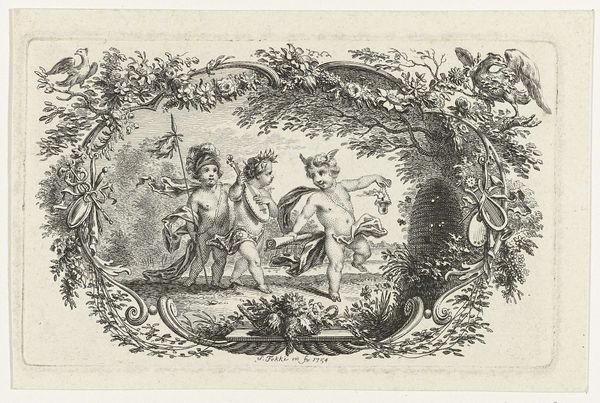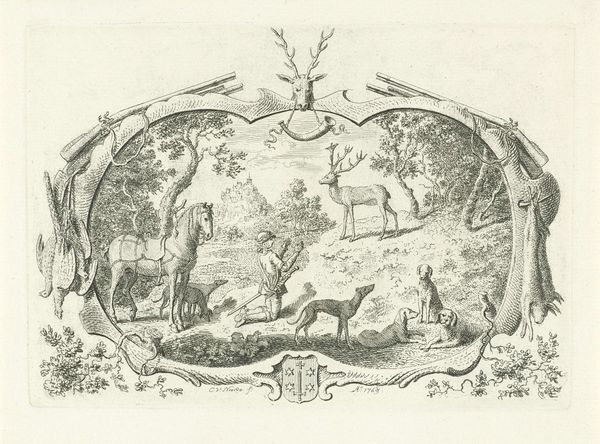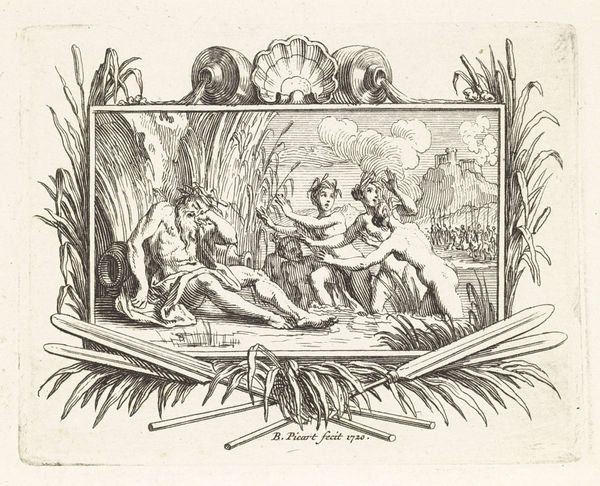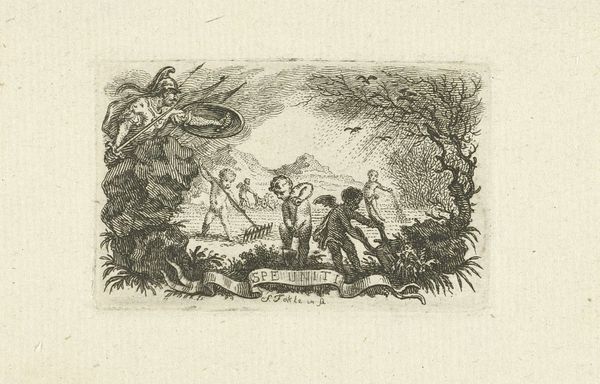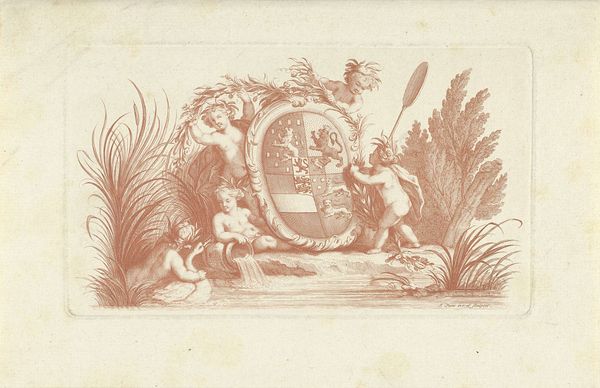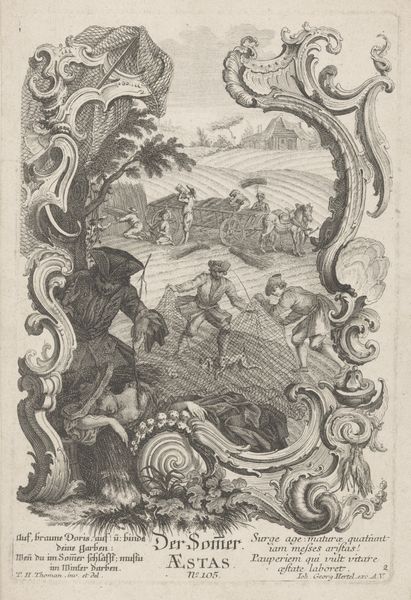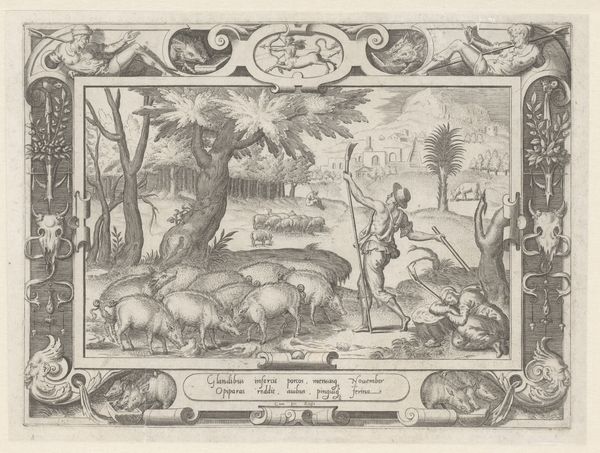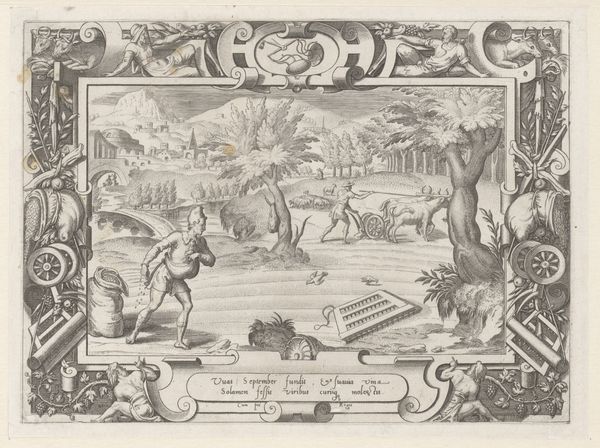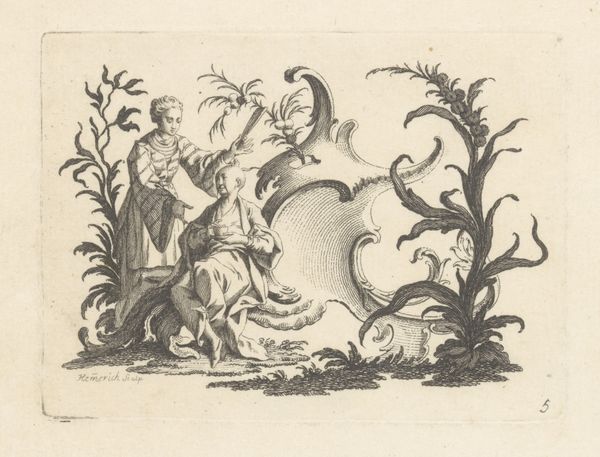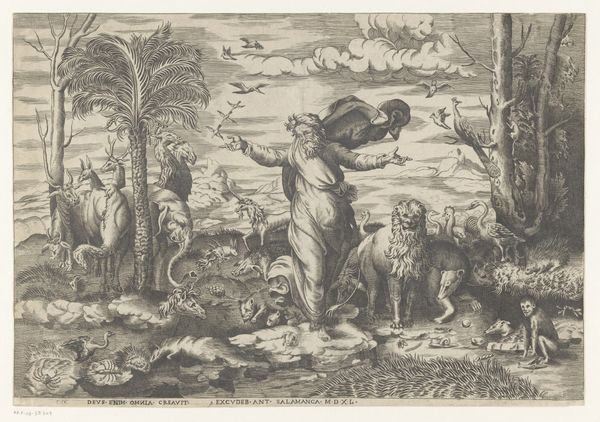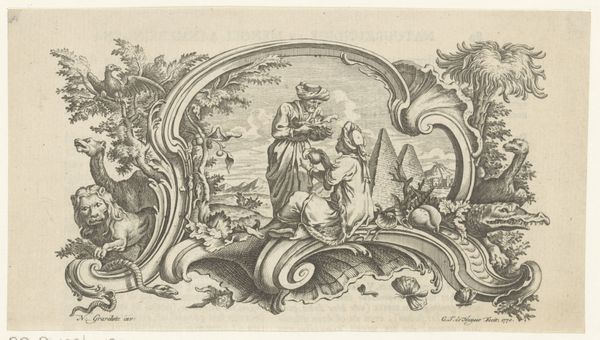
Dimensions: height 112 mm, width 200 mm
Copyright: Rijks Museum: Open Domain
This heraldic print was made by Reinier Vinkeles. We don't have an exact date for the artwork but Vinkeles was active in the late 18th and early 19th century. The image is an engraving, which means it was made by carefully incising lines into a metal plate, inking the plate, and then using a press to transfer the image to paper. Engraving is a highly skilled process, demanding precise hand-eye coordination and years of training. The result is a crisp, clean image, ideally suited to reproducing intricate designs like this coat of arms. Consider the social context: heraldry was closely tied to aristocratic identity, signifying lineage and power. But engraving, as a reproducible medium, also made these symbols of authority more widely accessible. So, while the image speaks to a rigid social hierarchy, its very production hints at the emerging forces of mass communication. This tension between exclusivity and accessibility is crucial to understanding the print’s significance.
Comments
No comments
Be the first to comment and join the conversation on the ultimate creative platform.
